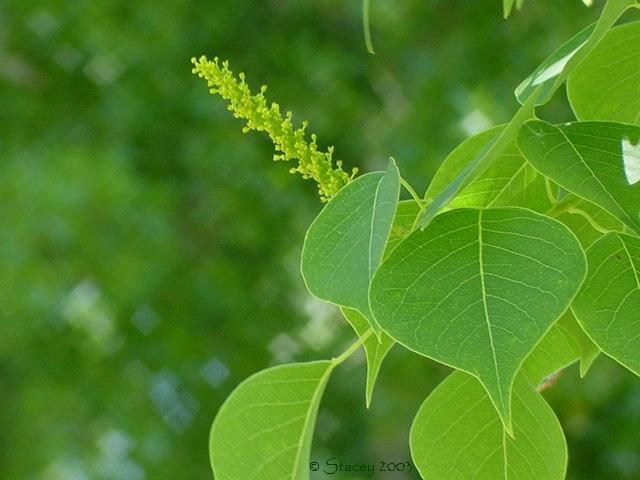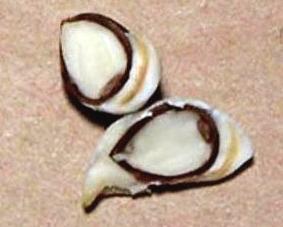Sapium Sebiferum
Yields
Tallow seeds contain 45-60% vegetable oil, about two to three times the amount found in an equivalent weight of soybeans. Commercial plantations typically contain about (160 trees per acre, 400 trees per hectare), trimmed low for hand harvesting. Yields average (12,500 pounds of seeds per acre, 14 metric tons per hectare) containing (2,300 pounds/1043kg) of stillingia oil, (2,500 pounds/1133kg) of wax, (1,400 pounds/635kg) of protein concentrate, (982 pounds/445kg) of fibrous coat and (4,000 pounds/1814kg) of shell (endocarp). Of those 14 MT, 5.4 MT would be tallow and oil, with the remainder being protein material useful in animal fodder and shells and fibers for fuel. In China, the meal is used as a high-nitrogen fertilizer.
Per acre/hectare, these oil yields are 15 times more than soybeans, 10 times more than sunflower or safflower, seven times more than peanuts and five times more than rape seed. Annual commercial production averages about (645 gallons/2442 liters) – the equivalent of 15.4 barrels of oil per acre. Some experts cite figures as high as (970 gallons/3673 liters) or 23.1 barrels of oil per acre.
LSU AgCenter scientists have confirmed that Chinese tallow trees growing in favorable environments in Louisiana are capable of extraordinary yields. Hand harvesting of a single tree with a drip-line area of (380 square feet/35 sq m) produced (68 pounds/31kg) of seed, by extrapolation, this represents a seed yield of more than (7,800 pounds per acre/3537kg per ha) containing (14,000 pounds/1814 kg) of tallow and (3,750 pounds/1700kg) or about (420 gallons/1590 liters) of kernel oil.
Nursery stock planted in full sun with adequate water and nutrients frequently produces high seed yields. In one stand of 12 landscape trees, seed production of every tree was rated good or exceptional. Naturalized trees generally produce greater seed yields when growing along stream banks or drainage channels. While they tolerate continual flooding, they seem to produce better when flooded intermittently. Tallow trees are also extremely salt-tolerant.
Seed size and weight also vary. Some trees produce seeds weighing an average of 185 milligrams, whereas others produce seeds of approximately half that weight. This trait appears to be largely genetically determined – trees with large seeds have been seen growing in close proximity to trees with small seeds.
As a source of vegetable oil for the production of high-quality biodiesel, the tallow tree has few peers.
Carbon Capture
I was unable to find rates of CO2 sequestered for Sapium sebiferum – Chinese tallow tree in order to qualify for carbon tax credits. If you have tons per hectare per year, please send along your information and I will post it here.
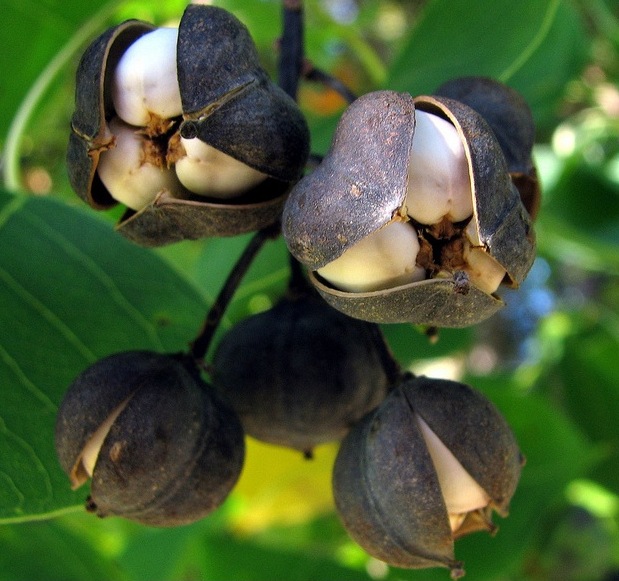
Byproduct Uses
Chinese Tallow seeds have an oil content ranging from 24-32%, this total is comprised of two different fats. The seed has an outer covering, referred to as tallow, which is a waxy solid, and the kernels produce oil known as stillingia oil. The tallow is used commercially for manufacturing candles, soap, cloth and fuel. The stillingia oil is used as a varnish and paint ingredient (because of its quick drying properties), machine oils, and crude lamp oils. The oils have been used as a purgative and are not usually considered as vegetable oil for human consumption in Chinese tradition.
Chinese tallow tree can also be utilized for biomass production. The trees coppice well and grow rapidly, allowing multiple grow-outs from the same planting. Taproot production, drought and salt tolerance, and rapid growth rate make Chinese tallow tree an ideal tree for biomass production along coastal regions. Once trees begin to decline in productivity of oils, they can be harvested for other energy purposes.
Seed meal left after oil and tallow extraction possesses a high protein-content, and it makes a valuable feed and fertilizer. The meal can also be processed into high-quality, refined flour, superior to that of wheat.
Cultivation of the tallow tree is not new. It has been grown in China for at least 1,500 years, partly for its vegetable wax used for soap and candles and partly for coloring silk with a black dye produced by boiling its leaves in alum.
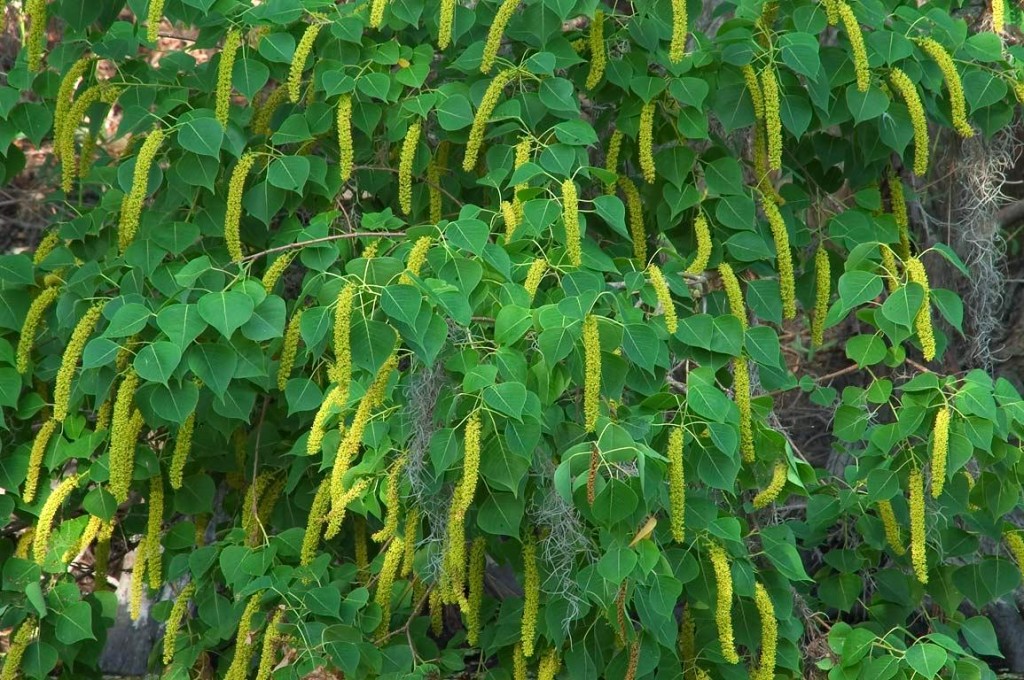
Description
"Sebifera" and "sebiferum" mean "wax-bearing" and refer to the thick layer of vegetable tallow that coats the seeds. Because of the prolific production of these vegetable-oil-bearing seeds, the tallow tree promises to become the second or third most productive source of vegetable oil for biodiesel, after oil palm and possibly algae.
T. sebifera initiates growth in February, and flowers from March through May. Fruits ripen from August to November. Trees generally live 15-25 years with a potential maximum age of 100. T. sebifera can begin flowering and fruiting when the plant is one meter tall or approximately three years old. Tree stumps have the ability to re-sprout, and roots fragments can readily develop shoots.
Chinese tallow grows very quickly and vigorously. It rapidly develops a taproot system to help it withstand drought. Individual trees can reach 30-45 feet in height and 3 feet in diameter. It is also a tree that is adapted to a variety of growing conditions, thriving along canal and stream banks, steep mountain slopes, sandy beaches, and alkaline, saline, or acid soils. Chinese tallow tree is adapted to many soil types, including peat soils and leaf molds.
In addition to tolerating salt, the tallow tree grows well on marginal soil, tolerates prolonged flooding and occasional freezing temperatures, attracts few insect pests or troublesome diseases, and appears to be a low-input tree.
It was observed that in coastal South Carolina, an individual plant can produce more than 100,000 seeds in a year and 40% of the seed crop was effectively dispersed by at least 16 bird species.
The tallow tree is an excellent honey plant that results in a good quality honey with a slight tang prized by some and discounted by others. Rumors persist that beekeepers have played a principal role in spreading the tallow tree in eastern Texas and western Louisiana . The nectar is non-toxic, and it has become a major honey plant for beekeepers. The honey is of high quality, and is produced copiously during the month of June, on the Gulf Coast. In the Gulf coast states, beekeepers migrate with their honey bees to good tallow locations near the sea.
Without question, the tallow tree can rapidly colonize poorly managed pastures, fence rows, clear-cut forests and other areas that offer adequate sunlight, which put it on the watch list as an invasive species threat.
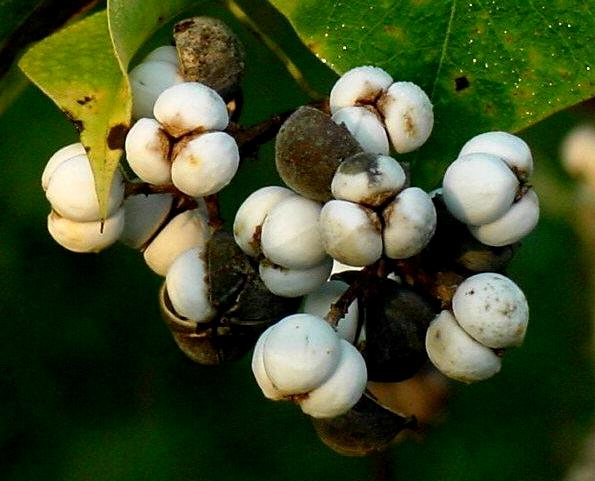
Distribution
Chinese tallow tree is a tree native to much of central China and Japan, requires a sub-tropical climate and has been introduced to other countries, particularly North India and southern USA. The invasive potential of the Chinese Tallow tree is a serious concern that has been raised in the Development of Bioenergy’s feed-stocks when the attributes that make the plant an ideal bio-energy crop are shared by plants that become invasive.
Tallow trees are seldom found on drought-prone soils or in undisturbed mature forests. Fertility requirements are largely unknown, though limited evidence suggests they are low. These trees apparently attract few insects, and these few do not appear to affect the trees adversely.
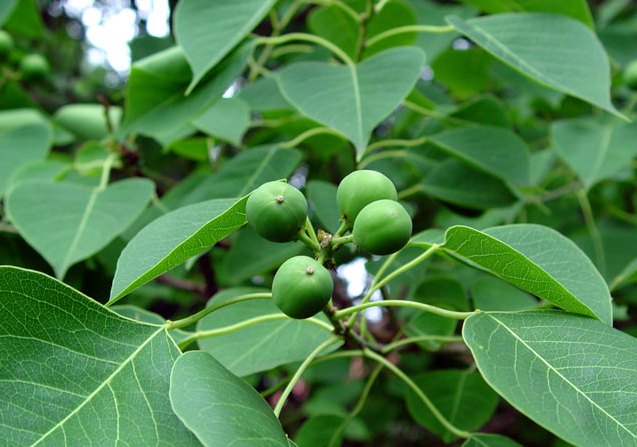
Planting
Trees can be grown in plantation style settings with about 400 trees per hectare (160 trees per acre) reaching a height of (30-40 ft/9-12 m) with a spacing between trees of (15-20 ft/4.7-6 m). Trees require full sun exposure.
Soil pH requirements range from 5.6- 6.0 (acidic) to 6.6- 7.5 (neutral). Specific Primary Habitats are coastal prairie, wetlands, stream banks, and bottomland forests as well as to disturbed areas such as ditches, pastures, and waste areas. Tallow is tolerant of soil types, flooding, and drought.
Annual precipitation of 1.3-3.7m per year is best for productivity and the tree prefers mean air temperatures between 12.5-30°C. The tree may be propagated by seed, cutting, or grafting onto rootstock. The trees may produce fruit for up to 100 years, and can begin producing fruit in as little as three years after planting. Propagate from seed and sow indoors before last frost.
T. sebifera is a subtropical to warm temperate plant, hardy and able to withstand light frosts, but un-ripened twigs are susceptible to frost injury. It typically occurs at elevations of 0 to 800 m.
T. sebifera is tolerant of flooding in fresh, brackish, or saltwater. The trees survive flooded conditions by producing hypertrophied lenticels and adventitious roots. In saline water, seedlings can survive up to 6 weeks, although rates of growth become negatively impacted.
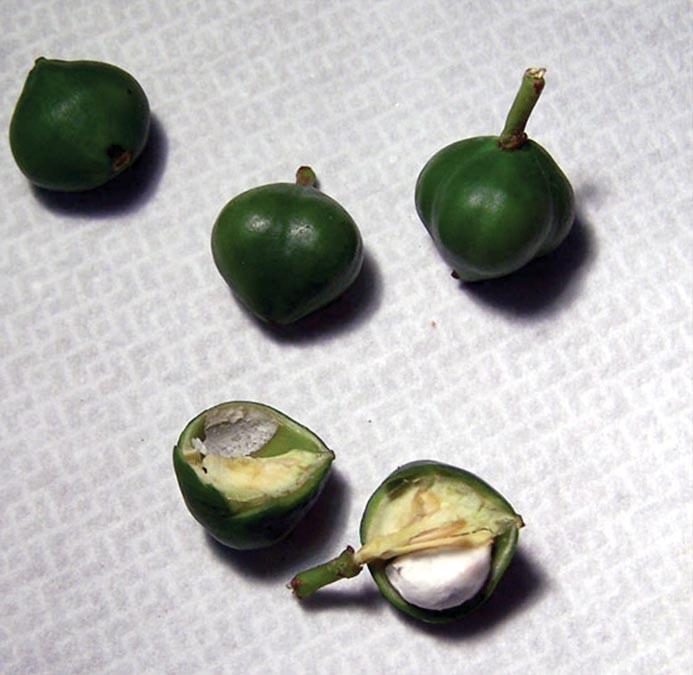
Fertilizing
Naturalized tallow trees appear to have few insect or disease pests, and therefore would not require pesticide applications. While preliminary studies have shown that light fertilization can be beneficial during stand establishment, it is uncertain whether fertilizers would be necessary once commercial harvest begins, especially if the seed meal is returned as an organic fertilizer.
Harvesting
Although hand harvesting is used in China and other countries where the tallow tree is cultivated, a practical method of mechanical harvesting is essential to commercial development in the United States or other labor expensive countries.
The size of the trees and its uneven maturity are two challenges to successful mechanical harvesting. In naturalized stands, maturity occurs over several weeks. By completion, the earliest seed has fallen or begun to decay on the tree. Attempts to thresh (immature fruit/ unripe capsules) rapidly results in clogged equipment, the aril (fleshy seed covering) is highly viscous until exposed to air and quickly clogs harvesting equipment.
Fortunately, when young branches are cut from the tree and allowed to dry on the ground, the fruit uniformly matures within a few days. Careful pruning and harvesting are especially important, as pruning larger branches during harvesting can significantly reduce yields in the subsequent year.
The LSU AgCenter is exploring a promising technique that involves using a boom-mounted sickle bar to prune branches of ripening fruit from trees growing in rows. Fruit is allowed to mature on pruned branches, and then the seed is harvested with a combine modified to accommodate the wax-covered seed, which is slightly larger than soybean seed.
In Georgia, David Whetsell has organized the first harvest of seeds from wild trees, which in Georgia grow 30 to 40 feet tall, using boom trucks and a vacuum collection system. Whetsell is forming a company called Whetsell Energy to harvest and extract the oil.
Extraction
The tallow layer consists primarily of palmitic, oleic and stearic acids. The kernel oil consists primarily of linoleic, linolenic and eleostearic acids. The considerable variation in the proportions of tallow and kernel oil as well as in the fatty acid composition within the fractions suggests it may be possible to select trees to meet specific end-use requirements.
The Chinese Tallow tree produces two kinds of fat from the same fruit. The outer coating, or mesocarp, covering the seeds yields a solid fat known as Chinese Vegetable Tallow, while the kernels contain a drying oil known as Stillingia oil. The fruit is a three lobed capsule some 15 mm in diameter which opens when ripe and contains the kernel, about the size of a pea, surrounded by the solid fibrous and fatty mesocarp. Its structure allows the separation of the two oils with little contamination one with another. The fruit consists of 27-33% tallow seed coat, 36-41% shell and 29-35% kernel (dry basis). Both the outer seed coat and the kernel are very high in fat 55-78% and 53-64% respectively.
Major Fatty Acid Composition of Stillingia/Tallow Oil
| Lauric acid | 0-2.5% |
| Myristic acid | 0.5-3.7% |
| Palmitic acid | 58-72% |
| Stearic acid | 1.2-7.6% |
| Oleic acid | 20-35% |
| Linoleic acid | 0-1.6% |
From the separated fiber, Chinese Vegetable tallow is produced by solvent extraction or expression in cage presses. The seeds are then crushed and subjected to solvent extraction using hexane. The Stillingia oil released from the seed during this procedure is recovered from the hexane by a vacuum distillation process.
Studies in the USA are being conducted to determine optimal oil extraction parameters in a batch-type and laboratory scale continuous-flow microwave system to obtain maximum oil recovery from whole seeds using ethanol as the extracting solvent. For the batch system, extractions were carried out for different time/temperature combinations ranging from 60 to 120 °C for up to 20 min. The batch system was modified for continuous extractions, which were carried out at 50, 60, and 73 °C and maintained for various residence times of up to 20 min.
Maximum yields of 35.32% and 32.51% (by weight of dry mass) were obtained for the continuous and batch process, respectively. The major advantage of microwave assisted solvent extraction is the reduced time of extraction required to obtain total recoverable lipids, with corresponding reduction in energy consumption costs per unit of lipid extracted. These studies indicate that microwave extraction using ethanol as a solvent can be used as a viable alternative to conventional lipid extraction techniques for Chinese tallow seeds.
A separate approach comes from California-based BioCentric Energy Inc. to commercializing the tallow tree for biodiesel, grinding the entire tree and extracting the oil. Bench experiments indicated that 38 percent oil can be extracted using a microwave process developed by BioCentric. The company is developing a new microwave technology for oil extraction from algae and bio oil derived from municipal solid waste processing. "We can time the frequency of the microwave so it only releases the hydrocarbon," Fisher explains. Once the oil is extracted from the Chinese tallow, a standard transesterification process makes biodiesel with a cloud point of 2 degrees Celsius (35.6 degrees Fahrenheit). Fisher says the waste biomass, which he calls green charcoal, can be used for heat.
Louisiana State University Project extracted Tallow Wax 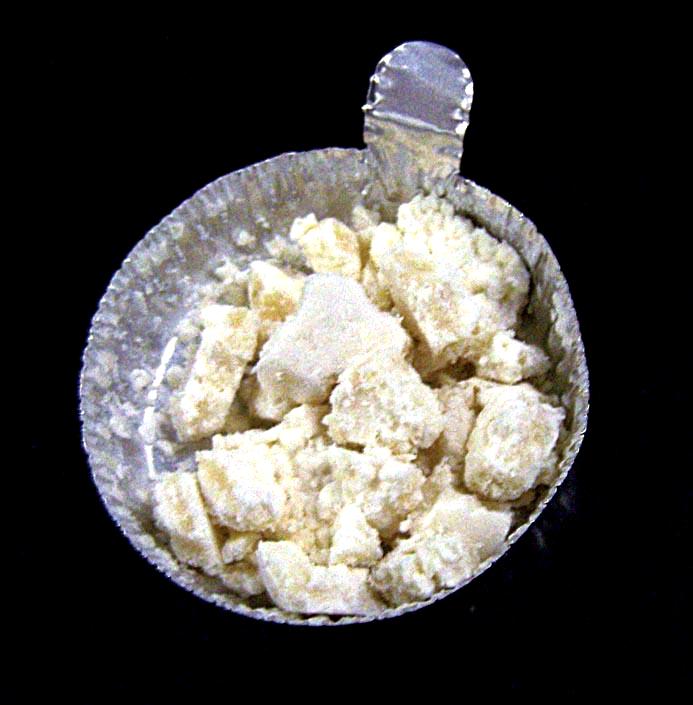
Drying and Storage
Because the waxy aril sheds water, seeds may not require drying before storage and processing. Most energy expenditures will be incurred at harvest or for post-harvest shipping and processing.
Commercialization Potential
Tallow trees readily adapt to soils too infertile, wet or saline for profitable agriculture; therefore, commercial production will not compete with food crops for limited land resources.
Conversion to commercial production of 500,000 acres of non-crop uplands currently hosting dense stands of tallow trees in southwest Louisiana has the potential to produce 80 to 140 million barrels of biodiesel.
Studies
Chinese Tallow Trees a Potential Bioenergy Crop for Louisiana
David DuByne is a consultant for companies entering Myanmar & agricultural commodities export broker for green coffee, honey, farm raised fish out of Myanmar. He can be reached at ddubyne (at) oilseedcrops [dot] org.

